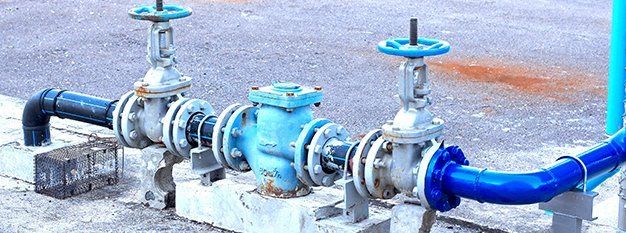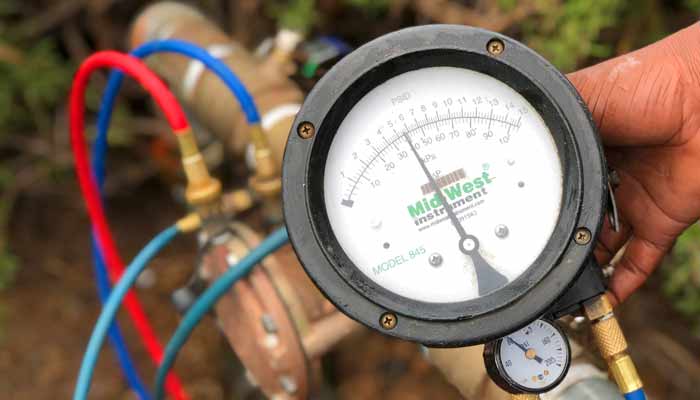They are making a number of good observations on the subject of Is backflow testing necessary? as a whole in the article just below.

Yes, you need to backflow test your home's water to ensure that the water is devoid of toxins as well as unsafe degrees of chemicals. You need to not try to do heartburn testing on your own because of the equipment required and room for error. We advise that you call an expert plumber every number of years to examine your water.
Heartburn Can Effect Both You and Your City
Because dangerous backflow can impact the public water supply in addition to a solitary structure, several cities develop heartburn guidelines. Modern-day cities have backflow tools in place that protect the water supply that comes from the majority of homes and also industrial residential or commercial properties. The genuine danger comes from watering systems, which can harm the water system with hazardous plant foods, manure, and also other chemicals.
What Causes Heartburn?
A regular reason of backflow is a loss of water pressure that causes the water to siphon back right into the water supply. After some time, there is a loss in water pressure as well as the tube starts to draw the water back into the water supply. As you can imagine, there are currently chemicals from the paint that are going into the water supply, potentially presenting a risk.
Heartburn Screening is Needed by Law in Specific Cities
Relying on where you live, you might in fact be needed by law to backflow test your regulation. Iowa City keeps a record of all properties served by the city's water supply. The city requires that particular "high-hazard" centers undergo backflow screening. In many cases, properties such as houses and also apartment are affected.
You Can Avoid Heartburn
The main function of a heartburn device is to avoid water from streaming backward into your water supply. Plumbing professionals set up the tool on the pipes in your home to ensure that the water just streams in the right direction.
What is Backflow?
Basically, backflow is when water moves upwards-- the opposite direction in the plumbing system. This is likewise referred to as "backpressure." When the water moves in this direction, it can combine with harmful contaminants and also pose a risk.
Call a Plumber to Test for Backflow Before It is Too Late
A plumbing company can swiftly check your home's water to identify if there are any kind of harmful chemical degrees. And if you do discover that your water has high levels of toxins, a plumber can conveniently install a backflow prevention tool.
Yes, you need to backflow test your home's water supply to guarantee that the water is totally free of toxic substances as well as hazardous degrees of chemicals. Lots of cities establish backflow standards due to the fact that hazardous heartburn can influence the public water supply in enhancement to a single structure. A regular cause of backflow is a loss of water stress that causes the water to siphon back right into the water supply. After some time, there is a loss in water pressure as well as the hose pipe starts to draw the water back into the water supply. The major purpose of a backflow device is to protect against water from streaming backwards into your water supply.
Backflow Testing: What Is It, and Why Is It Necessary?
What Is Backflow?
Backflow is exactly what you might imagine this somewhat gross-sounding word to mean. It is contaminated water that has reversed flow, and as a result, enters into the clean water lines of homes and businesses. Backflow is typically caused by a significant change in water pressure. This can be due to a water main break, frozen pipes or an unexpectedly high demand on the water system. It can occur at any cross-connection between clean and dirty water in residential, commercial or industrial water lines. And the worst part – backflow can contain hazardous materials like human waste, pesticides or chemicals. Needless to say, it poses very, very serious health concerns, not to mention the potential for a heap-load of expensive stress!
Backflow Prevention and Testing
In order to safeguard against backflow in standing structures, a backflow prevention device should be installed by a trusted team of professionals. Once installed, if there should ever be an unexpected or dramatic change in water pressure, the device will prevent backflow from entering into the clean water supply system. But, again, it’s important that this device is properly installed by a professional so that they can test it and ensure that the clean water line remains contaminant free. This really is key.
While personal standards and responsibilities should maintain certain routine testing requirements, there are already municipal codes in place that require annual testing of these backflow prevention devices. This ensures that they are functioning properly and that no hazardous contaminants are spilling out into the clean water supply. If, however, testing of any device is not completed on time, you should know that a property or business’ water supply might be interrupted, and the property owner might even face fines. So, to avoid this from happening to you, we recommend scheduling a backflow test well in advance.
Fortunately, here at Tritan, we can help schedule and carry out backflow testing for your property. We provide a variety of backflow-related services, including prevention device installation and testing. Call us today and make sure that this stressful problem doesn’t happen to you and your property or business.
https://www.tritan-plumbing.com/blog/2018/february/backflow-testing-what-is-it-and-why-is-it-necess/

We are very occupied with Backflow Prevention and I really hope you appreciated the new page. Sharing is caring. You just don't know, you will be doing someone a favor. We appreciate reading our article about Is backflow testing necessary?.
Click Here